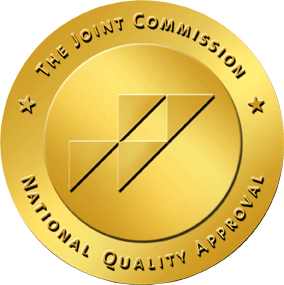Have you ever been in a situation where you felt uncertain but couldn’t really pinpoint why? Perhaps you looked around at everyone else in the room, but they appeared to be unbothered. Unfortunately, you were unable to shake the feeling that something was ‘off.’
While you don’t always realize it, your body is constantly taking in social cues from the environment. When you’re around other people, you’re interacting with them and picking up facial expressions, tones of voice, and body language. This is all part of the human experience.
As you’re experiencing these interactions, your sense of self is being shaped. You’re learning about who you can trust, who you should stay away from, and who makes you feel good about yourself. Even though you may not be able to understand all of these feelings, your body is processing this information all the time.
Understanding the Body’s Surveillance System
The reason why you’re able to scan a social environment quickly is because of the nervous system. The nervous system is a complex part of the body that gathers information and coordinates activity. The two main parts of the nervous system are the central nervous system and the peripheral nervous system.
- The central nervous system consists of the brain and the spinal cord.
- The peripheral nervous system includes the nerves outside of the brain and spinal cord – the somatic nervous system (voluntary) and the autonomic nervous system (involuntary).
The nervous system is always working in the background to control things like breathing, heart rate, and digestion. It also helps us read and respond to danger cues in our environment. And there is one nerve, in particular, that deserves our attention: the vagus nerve.
The Vagus Nerve: The Longest Cranial Nerve
The vagus nerve is the tenth cranial nerve, a very long and winding nerve starting at the medulla oblongata. This part of the brain is located in the lower section, where the brain and spinal cord meet.
There are two sides to the vagus nerve – the dorsal (back) and the ventral (front). From here, the vagus nerve runs down and throughout the body, controlling various internal organ functions like breathing, heart rate, digestion, and reflex actions (coughing, sneezing, swallowing).
This nerve has been of particular interest to Dr. Stephen Porges, Ph.D., a lecturer, scientist, and originator of The Polyvagal Theory. This theory developed out of the doctor’s experiments as he discovered that both branches of the vagus nerve play a role in scanning the environment, processing social cues, and supporting feelings of safety.
A Closer Look at the Polyvagal Theory
The Polyvagal Theory is an excellent tool for those who are recovering from unprocessed trauma. According to Dr. Stephen Porges, many people grow up in dysfunctional families. The issue isn’t whether or not they come from dysfunction, but rather that they can find meaning in their experiences.
People who experience trauma in their childhoods often grow up to have post-traumatic stress. Therefore, when they’re in social situations, their nervous system may react to the immediate environment or trigger emotions that remind them of past life events. The environment is not unsafe, per se, but the person is sensing danger from subtle cues like eye contact or body language.
If you pay attention to your own emotions in social settings, you may notice that your inner system cues can be overt or subtle. This is confusing, especially when the immediate situation is safe, though your body is responding like it’s not. But rather than telling yourself that you’re overreacting or being silly, the Polyvagal Theory says that this response is real and valid based on your neuroperception.
Polyvagal Theory, Psychotherapy, and Trauma at Breathe Life Healing Centers
The Polyvagal Theory is still new, and supporting evidence is limited. That being said, it still gives us insight into why our bodies may react in certain ways based on the environment we’re in. You could be having a great time with friends at the bowling alley, and all of a sudden experience feelings of uneasiness, even though you are safe.
The Polyvagal Theory can be implemented in psychotherapy, particularly for trauma survivors. It’s important for therapists to be open and receptive, as well as create an environment where clients feel heard and understood. Through this work, clients learn how to identify the state of their nervous system at any point in time and ways to regulate their response.
Breathe Life Healing Centers offers evidence-based care for individuals suffering from substance use and mental health disorders, including trauma. Contact us today to learn more about our innovative approaches to treating complex trauma, including neurofeedback, eye movement desensitization and reprocessing (EMDR), medication, and psychotherapy.













